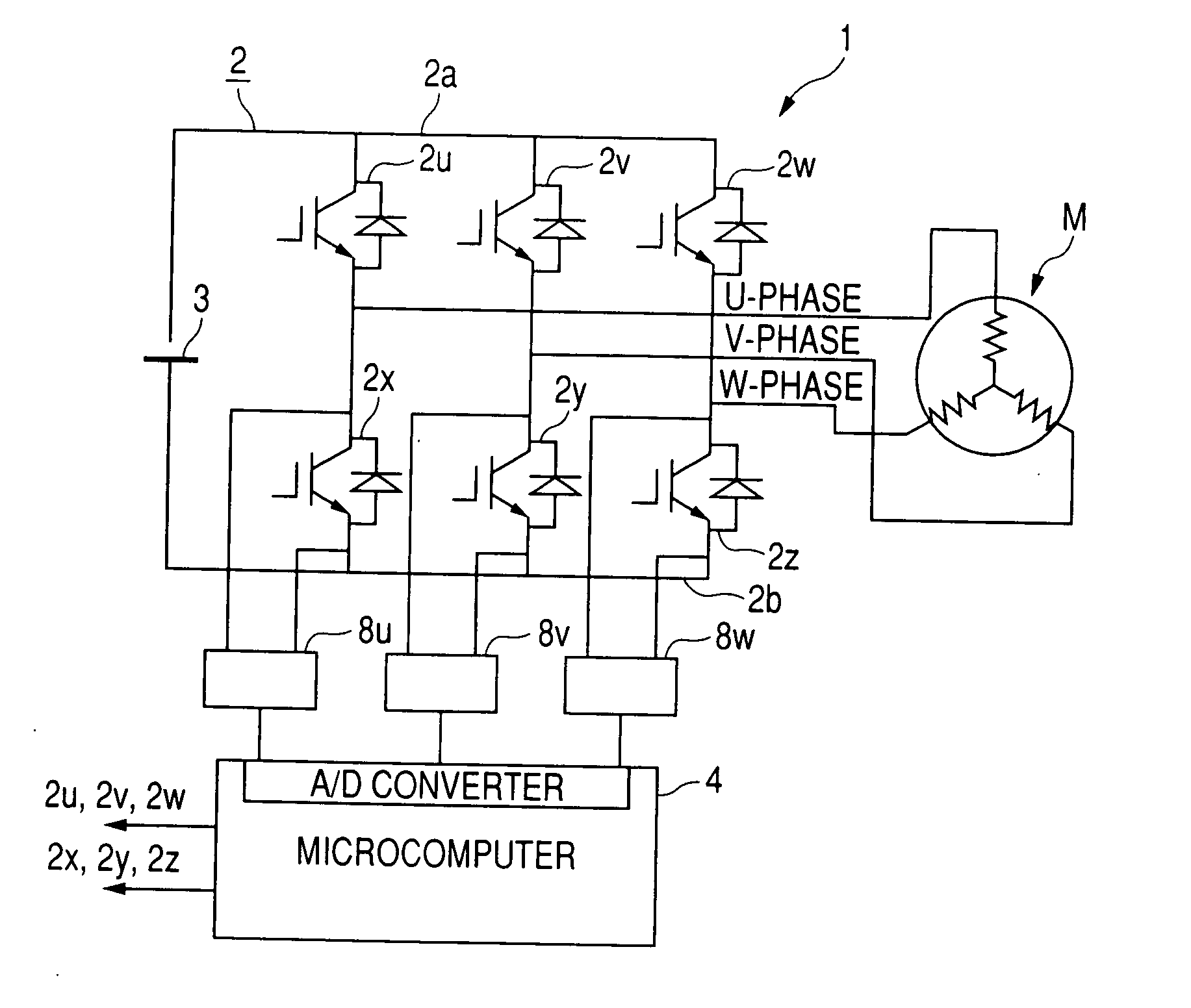Position sensorless control apparatus for synchronous motor
a synchronous motor and control apparatus technology, applied in the direction of electronic commutators, motor/generator/converter stoppers, dynamo-electric converter control, etc., can solve the problems of high cost, low efficiency, and large vibration, and achieve low noise, less computation load, and high efficiency
- Summary
- Abstract
- Description
- Claims
- Application Information
AI Technical Summary
Benefits of technology
Problems solved by technology
Method used
Image
Examples
Embodiment Construction
[0051]FIG. 1 is a circuit diagram showing an electrical structure of a synchronous motor control apparatus 1 according to an embodiment of the invention.
[0052]The synchronous motor control apparatus 1 is constituted by an inverter circuit 2, a DC power source 3, a microcomputer 4 including an A / D converter for detecting phases currents, and current detecting circuits 8u, 8v, 8w each constituted by an operational amplifier. The inverter circuit 2 supplies electric power to each of a U-phase, a V-phase, and a W-phase of a synchronous motor M having a permanent magnet rotor structure. The DC power source 3 supplies electric power to the inverter circuit 2. The microcomputer 4 generates a PWM signal having a duty ratio depending on an external command designating an inverter output voltage.
[0053]The inverter circuit 2 is a three-phase inverter circuit having a structure in which 6 power switching devices are bridge-connected between a DC bus 2a and a DC bus 2b. The 6 switching devices i...
PUM
 Login to View More
Login to View More Abstract
Description
Claims
Application Information
 Login to View More
Login to View More - R&D
- Intellectual Property
- Life Sciences
- Materials
- Tech Scout
- Unparalleled Data Quality
- Higher Quality Content
- 60% Fewer Hallucinations
Browse by: Latest US Patents, China's latest patents, Technical Efficacy Thesaurus, Application Domain, Technology Topic, Popular Technical Reports.
© 2025 PatSnap. All rights reserved.Legal|Privacy policy|Modern Slavery Act Transparency Statement|Sitemap|About US| Contact US: help@patsnap.com



